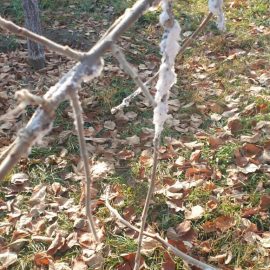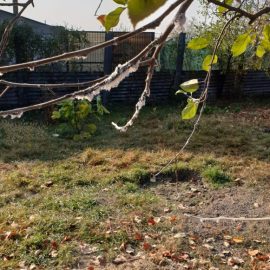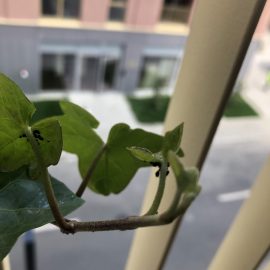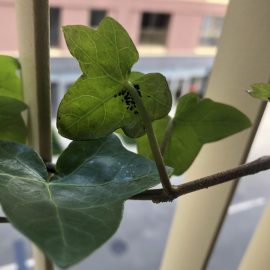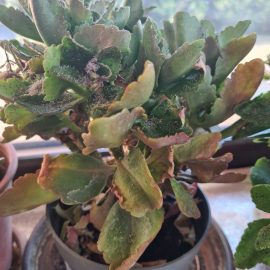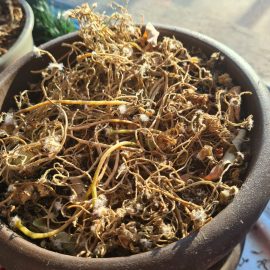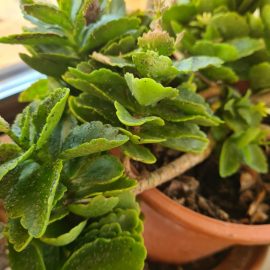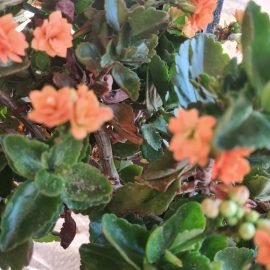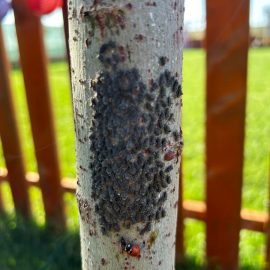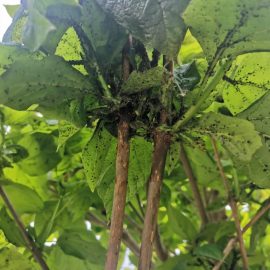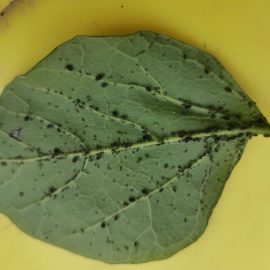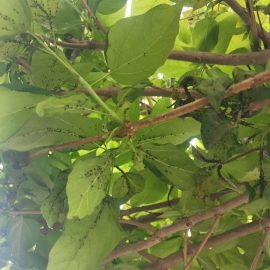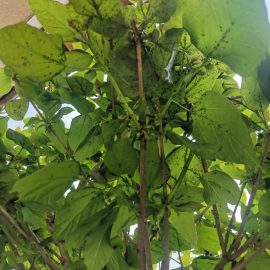Potato aphid (Macrosiphum euphorbiae) – pest management
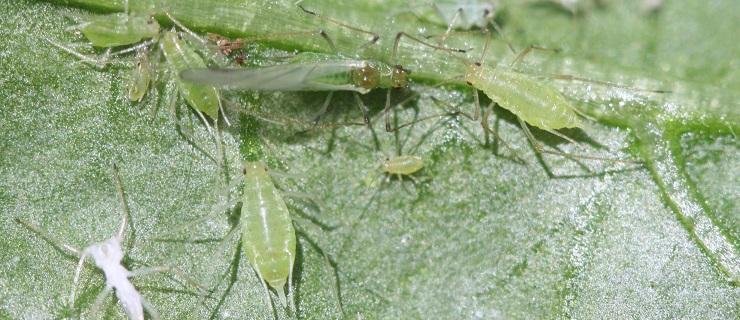
The potato aphid, Macrosiphum euphorbiae, is widespread in Europe and North America. This pest attacks both field crops and protected areas.
Description. The insect has different sizes (1-2.5 mm) and various colors, from yellow, red, brown, green to black. The body is shiny or has a waxy secretion. The abdomen is provided with cornicles and a tail. The antennas are usually dark in color. Adults may or may not have wings.
Biology and ecology. It is a polyphagous pest widespread in vegetable crops. This pest produces 8-12 generations per year and overwinters as an egg or as an active adult on infested crops. In the spring, from the eggs, the females hatch. A female can give birth to 30-50 larvae, and once every 3 weeks a new generation appears. Towards autumn, sexed adults also appear, which, after mating, lay eggs on the spontaneous flora.
Population development is dependent on climatic conditions. This factor determines the number of generations per year. Low temperatures prolong the life of aphids but eliminate their ability to breed. The same thing happens at temperatures above 30º C.
Damage. Potato aphids attack over 200 species of plants including vegetables (tomatoes, potato, lettuce, eggplant, cabbage), fruit trees, ornamental plants (roses), and weeds. Adults and larvae cause damage by stinging the apical leaves on the underside, which leads to the embossing of the leaves and the destruction of growth buds. Affected leaves and flowers turn yellow and dry. The attacked plants have slow growth, weaken and produce a low harvest. Aphids secrete a sticky liquid that they leave behind on the leaves allowing the infection with saprophytic fungi of the genus Capnodium, in the form of a condition called sooty mold. The presence of sooty mold hinders the processes of respiration and photosynthesis of the leaves.



The potato aphid is an important vector for transmitting viruses. For example, in the case of potatoes, which are propagated through vegetal material, the transmission of viruses is the main problem of seed material producers.
Pest management. Given the damage caused by aphids through the spread of viruses, it is important to take several measures to prevent their spread and limit their population. The elimination of the populations that appear in spring is indicated, by destroying the primary and secondary hosts, by disinfecting the greenhouses and the seedlings. It is important to carry out treatments on seedlings. The treatments have to be done at the appearance of the first aphid colonies, with systemic products.
Natural predators that consume potato aphids: Coccinella septempunctata and Syrphidae, species of Itonididae dipterans, fungi of the genera Entomophtora, Oospora, and Cephalosporium.
Because of the risk of spreading viral diseases, the use of virus-free planting material is indicated.
Recommended products
-
You can find products on a different store
Change Store -
You can find products on a different store
Change Store -
You can find products on a different store
Change Store -
You can find products on a different store
Change Store -
You can find products on a different store
Change Store -
You can find products on a different store
Change Store -
You can find products on a different store
Change Store -
You can find products on a different store
Change Store -
You can find products on a different store
Change Store -
You can find products on a different store
Change Store -
You can find products on a different store
Change Store -
You can find products on a different store
Change Store -
You can find products on a different store
Change Store -
You can find products on a different store
Change Store -
You can find products on a different store
Change Store -
You can find products on a different store
Change Store -
You can find products on a different store
Change Store -
You can find products on a different store
Change Store -
You can find products on a different store
Change Store -
You can find products on a different store
Change Store -
You can find products on a different store
Change Store -
You can find products on a different store
Change Store -
You can find products on a different store
Change Store -
You can find products on a different store
Change Store















































































































































































































































































































































































































































